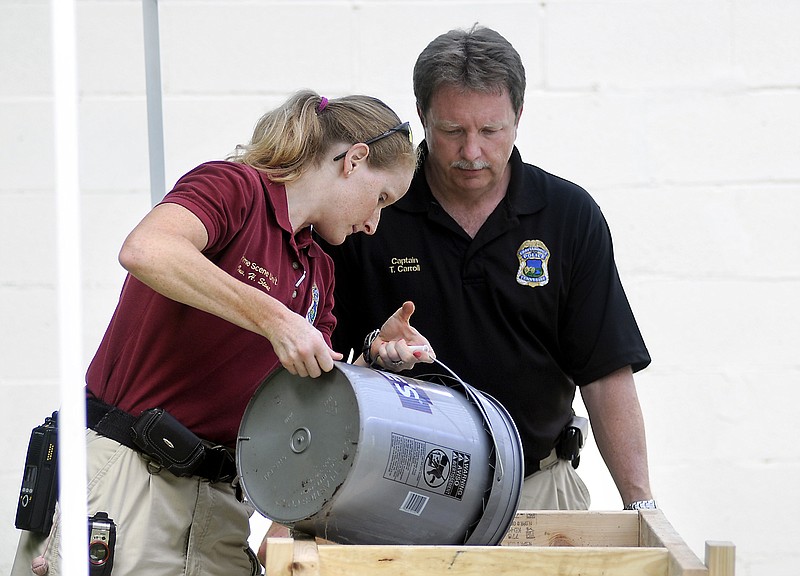Chattanooga police officers spent the day sifting through dirt for bone fragments after informant tips led them to an Arlington Avenue yard.
Police believe that, on the shaded spot a few feet behind a white, concrete-block garage, there may be evidence linked to a nearly decade-old missing persons case that went cold.
Tiny bone fragments found Tuesday didn't yield any firm evidence as to whether they were human or animal, police said. Photographs of the pieces, taken with digital cameras and cell phones, then sent to the University of Tennessee's Forensic Anthropology Center, didn't show enough for absolute confirmation, they said.
"It's going to be long and tedious. It's not like we can get a backhoe back there digging," said Capt. Tim Carroll, head of the department's major crimes division.
Yellow crime-scene tape blocked the entrance but not the view of a backyard where police had erected blue tents near the 6-by-3-foot patch of ground where ground-penetrating radar had led them to dig.
In the last few months, new information from interviews led investigators to the spot, where on Friday, radar originally built to detect utility lines showed there was something underground, Capt. Carroll said.
Details of the missing persons case are being held pending identification of the remains, he said.
He said the bones might be animal bones or even refuse from a plain-old barbecue. But they could be a mix of animal and human bones, he said. Pieces have been found less than a foot beneath the ground's surface, and within a dozen feet of the spot there is a brick grill.
The property owner and current renters are not involved in the investigation, and both allowed immediate access to the property, Capt. Carroll said.
Police requested assistance from the UT forensic center and, as of Tuesday, anthropologists with the center had helped remotely but had been unable to send anyone in person, police said.
"In addition to assisting in locating and recovering suspicious remains, forensic anthropologists work to suggest the age, sex, ancestry, stature, and unique features of a decedent from the skeleton," Whitney Holmes, media relations coordinator for UT, wrote in an e-mail.
Until further confirmation, investigators must tend to the site, Capt. Carroll said. Once they start to dig, there must be police on the scene 24 hours a day, he said.
That's why, after the radar found something Friday, investigators waited until Tuesday to begin the dig, he said.

